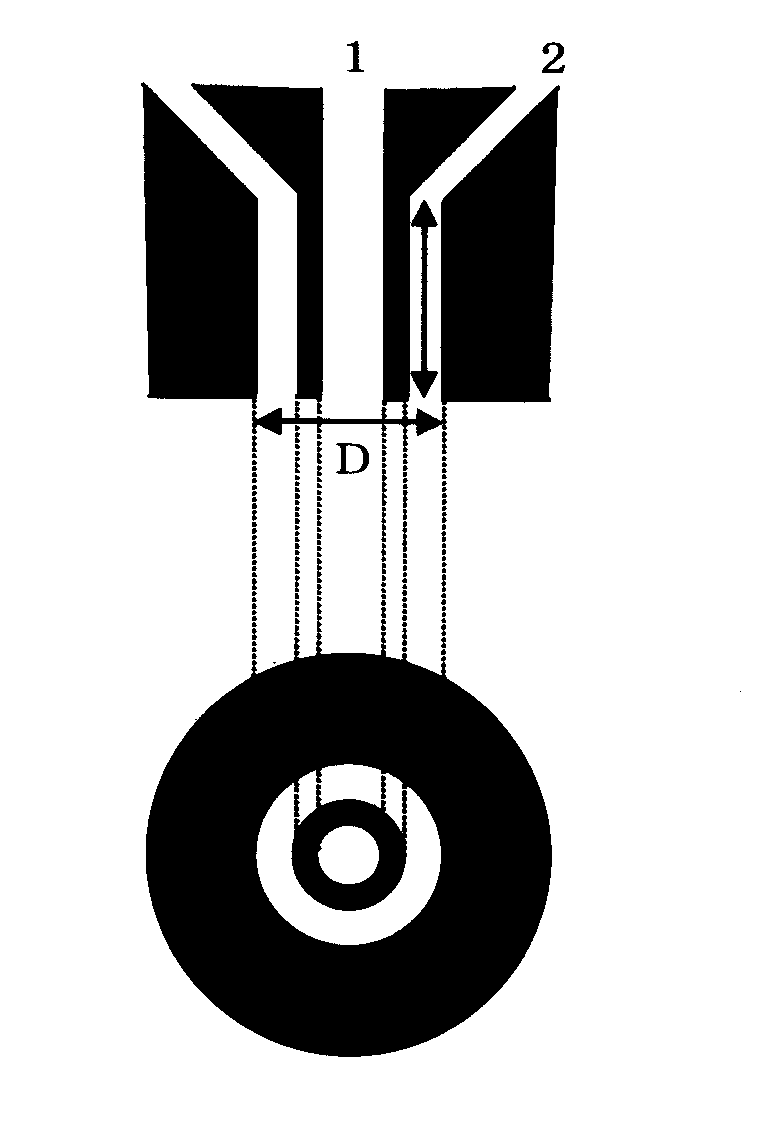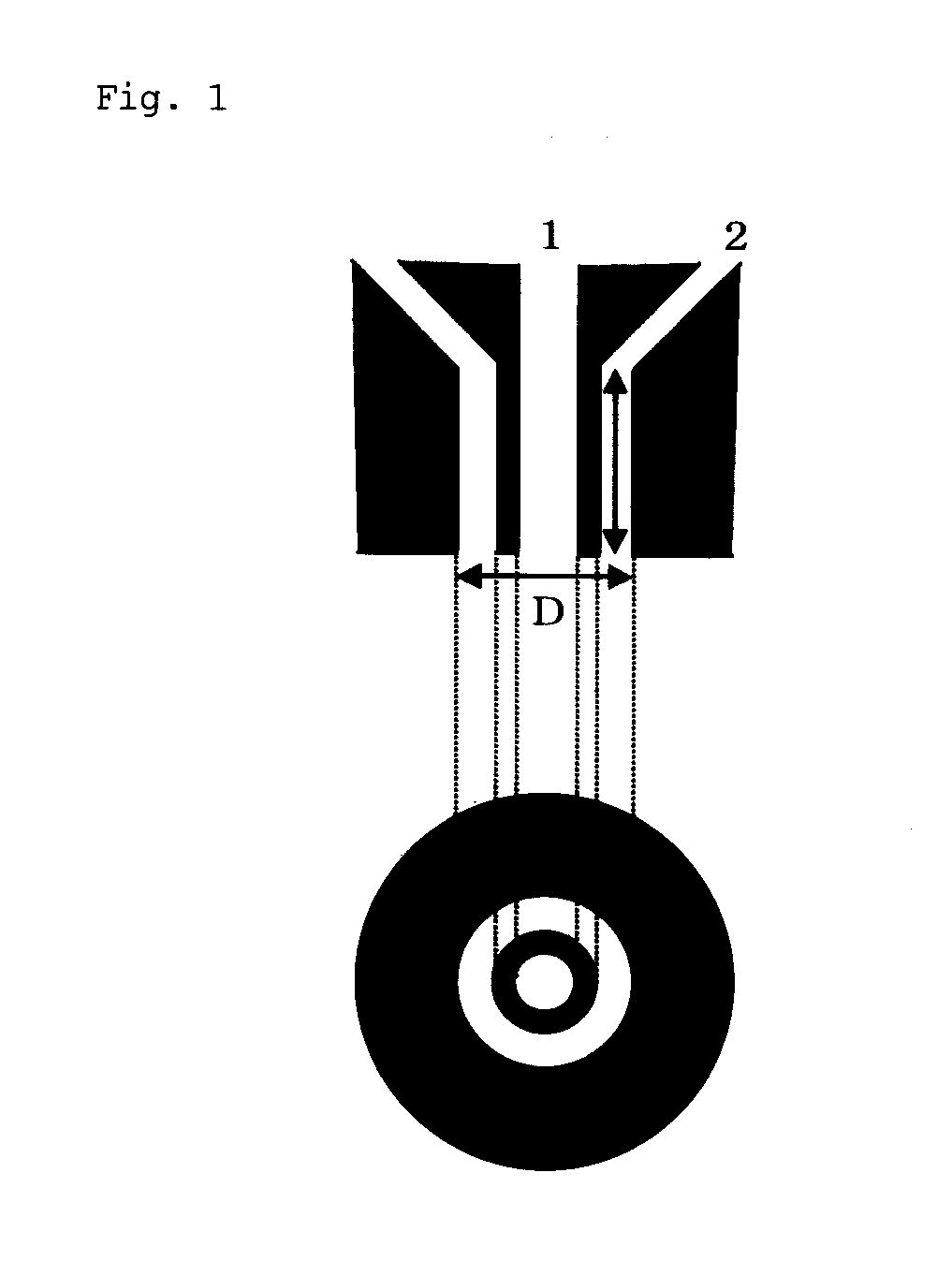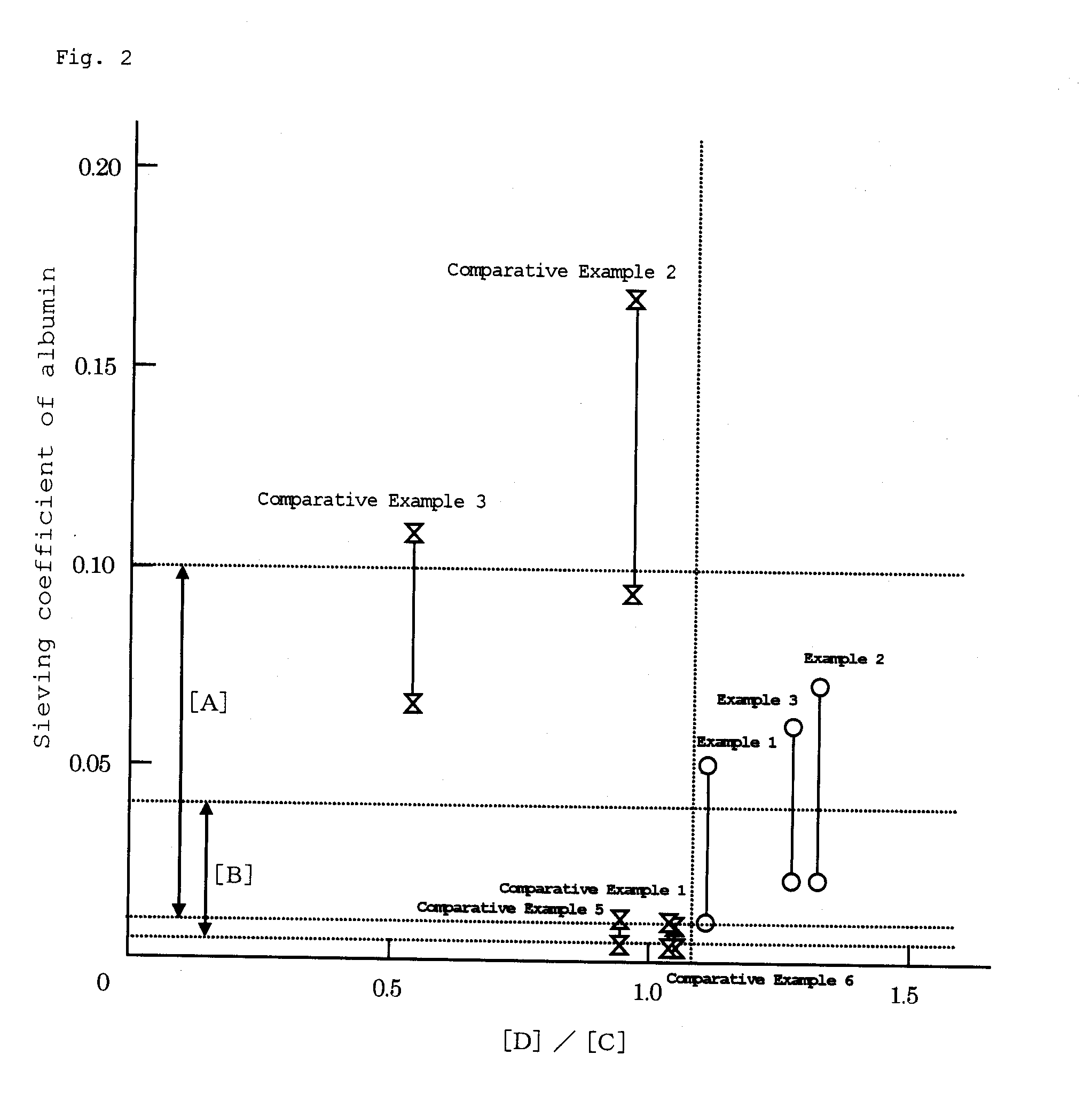Separation Membrane With Selective Permeability And Process For Producing The Same
a separation membrane and selective permeability technology, applied in the direction of membranes, separation processes, filtration separation, etc., can solve the problems of significant variability in the amount of elution, inability to meet strict safety requirements by the evaluation of a particular portion, and low storage stability, so as to accelerate the oxide degradation of polyvinyl pyrrolidone and lower storage stability
- Summary
- Abstract
- Description
- Claims
- Application Information
AI Technical Summary
Benefits of technology
Problems solved by technology
Method used
Image
Examples
example 1
[0215] 18% by weight of polyethersulfone (Sumika Excel 5200P manufactured by Sumika Chemitex Co., Ltd.), 3% by weight of polyvinyl pyrrolidone (Colidone K-90 manufactured by BASF AG) and 27% by weight of dimethylacetamide (DMAc) were mixed in a twin-screw kneader. The kneaded mixture thus obtained was charged into a stirring dissolution tank where 47.5% by weight of DMAc and 4.5% by weight of water had been charged, and was dissolved through 3 hours of stirring. Kneading and dissolution were carried out by cooling so as to prevent the solution temperature from rising above 30° C. Then the dissolution tank was evacuated to −500 mmHg and was immediately sealed and left to stand in this state for 15 minutes so that composition of the membrane forming solution would not change through evaporation of the solvent or the like. This operation was repeated 3 times so as to deaerate the membrane forming solution. The proportion of polyvinyl pyrrolidone to polysulfone-based polymer in the memb...
example 2
[0242] The membrane forming solution was prepared by the same method as in Example 1, with a composition of 18.0% by weight of polyethersulfone (Sumika Excel 4800P manufactured by Sumika Chemitex Co., Ltd.), 2.5% by weight of polyvinyl pyrrolidone (Colidone K-90 manufactured by BASF AG), 74.5% by weight of dimethylacetamide (DMAc) and 5.0% by weight of RO water. The proportion of polyvinyl pyrrolidone content to polysulfone-based polymer content in the membrane forming solution was 13.8% by weight. The polyvinyl pyrrolidone used as the raw material contained 100 ppm of hydrogen peroxide. The membrane forming solution thus obtained was passed through a two-stage sintered filter of 15 μm and 10 μm. Then the membrane forming solution was discharged at a spinning rate of 2.1 cc / min from a tube-in-orifice type nozzle heated to 70° C., while aqueous solution of 50% by weight of DMAc which had been deaerated at a pressure of −700 mmHg for 30 minutes was discharged at 30° C. as the internal...
example 3
[0248] The membrane forming solution was prepared by the same method as in Example 1, with a composition of 18.5% by weight of polysulfone (P-3500 manufactured by BP Amoco Polymers, Inc.), 3.0% by weight of polyvinyl pyrrolidone (Colidone K-60 manufactured by BASF AG), 74.5% by weight of dimethylacetamide (DMAc) and 4.0% by weight of RO water. The proportion of polyvinyl pyrrolidone to polysulfone-based polymer in the membrane forming solution was 16.2% by weight. The polyvinyl pyrrolidone used as the raw material contained 150 ppm of hydrogen peroxide. The membrane forming solution thus obtained was passed through a two-stage sintered filter of 15 μm and 10 μm. Then the membrane forming solution was discharged at a spinning rate of 2.4 cc / min from a tube-in-orifice type nozzle heated to 5° C., while an aqueous solution of 35% by weight of DMAc which had been deaerated at a pressure of −700 mmHg for 30 minutes was discharged at 15° C. as the internal liquid at the same time. The dis...
PUM
| Property | Measurement | Unit |
|---|---|---|
| Temperature | aaaaa | aaaaa |
| Temperature | aaaaa | aaaaa |
| Temperature | aaaaa | aaaaa |
Abstract
Description
Claims
Application Information
 Login to View More
Login to View More - R&D
- Intellectual Property
- Life Sciences
- Materials
- Tech Scout
- Unparalleled Data Quality
- Higher Quality Content
- 60% Fewer Hallucinations
Browse by: Latest US Patents, China's latest patents, Technical Efficacy Thesaurus, Application Domain, Technology Topic, Popular Technical Reports.
© 2025 PatSnap. All rights reserved.Legal|Privacy policy|Modern Slavery Act Transparency Statement|Sitemap|About US| Contact US: help@patsnap.com



